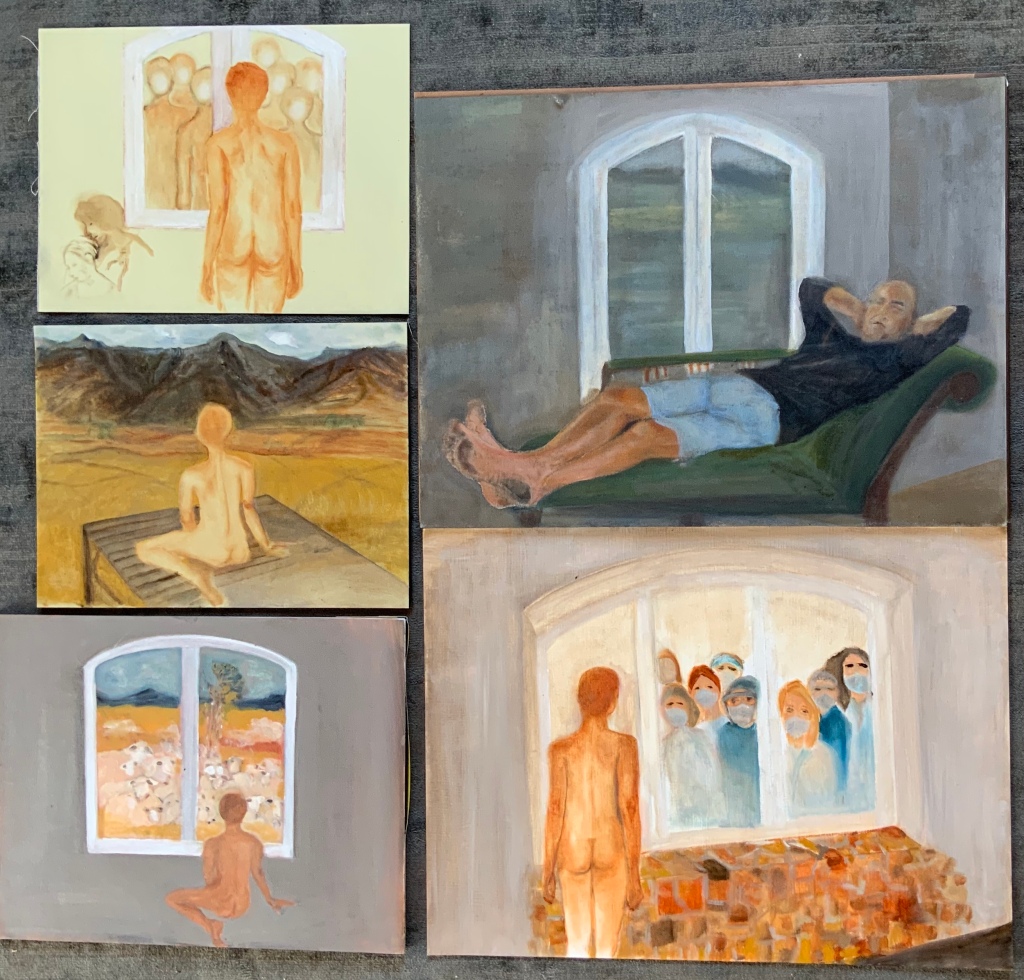A SERIES OF PAINTINGS ON A THEME
Subject matter, approach and techniques are entirely upon me and three to five paintings should be produced.
The spread of the pandemic Covid19 virus changed the course of my choices. I am in South Africa till the lock down ends, and my husband and I are allowed to travel back to Dubai. We are staying in a cottage on a farm, where we planned to move to within the next two years – the old farmhouse still needs renovation, and was part of a long term plan for the next few years before we settle in permanently. So here I find myself in the place I actually want to live permanently. In a way this is our dream, but the timing is out of sync with our plans. I have made a space to work in front of a window looking onto the sheep kraals. It is near planting season(wheat) and ewes carrying twins are in these kraals close to the homestead. This view is wide and stretches to faraway mountain ranges.
I have paintings which I wanted to rework and develop my ideas further. I would have loved to work on bigger supports in this process, but due to the lockdown and my location, this was not possible. I am thinking about the topics of learning in the course and mainly the techniques I started exploring and to what I felt a stronger sense of being drawn to it. I liked the figurative work, but landscape also intrigues me, for the opportunity to explore the outside world and connect with nature. My idea finally settled on the windows of the cottage where I find myself during this lockdown. I gained a stronger sense for the support or surface I am working on and how oil paint is very versatile in terms of it being applied thick, almost sculptured and very textured, but then also transparent and thin. I think the course enforced the qualities of paint as a medium to work with as well as how color influenced painting surfaces. I would like to explore in the series of works for this assignment how I could bring the landscape into my work, whilst also thinking about reflecting on tonality and shape of painting the human figure.
I started by going back to the Bougeareau painting I discussed in my first assignment. My tutor suggested thinking about chiaroscuro as working from dark to light. It was amazing when I took her advice to heart and focussed on the dark brown shadows around the face.
I feel the work brings out a pensive mood and whilst in lockdown on a sheep/grain farm in South Africa, I spent many a day in front of lovely big windows looking out onto the farm-landscape. My ideas for subject matter for this series started with a pensive mood around a window, looking out and also inwards, as one is supposed to spend most of your time inside the safety of your home. I feel this is also becoming a new process of transformation on many levels and my ideas on liminality is very much part of this exploration: some days there is almost this need for a balance between the chaos one hear or read about and a feeling of holding on to control inside your own little world.
A sense of place is where we are located: The farmstead is surrounded by mountains – to the right is the Kasteelberg (Castle Mountain) next to which our closest town, RiebeeckWest is nestled. Looking out of the bedroom-cum studio, one sees the biggest and highest range, Winterhoek ( winter”s corner mountains, if directly translated into English). During winter, the highest peaks are covered in snow. From the living area two smaller mountains can be seen when one look out onto the sheep kraals and the fields which are currently being prepared for the sowing of grains.
The works are also about my own looking and perceptions. I am thinking about seeing and being seen, and using my eyes and hand to put this to practice. Context of where I am at this moment in time also comes to play as I see this series also as a response to personal and world events.
In the work of Bougeareau I attempted to represent what he was seeing, but also as an exercise testing my ability to use paint and tone to achieve this. I like the study for the model’s expression and his limited use of colour. I can imagine that he did sketches beforehand.
I decided to call the series Looking Out; even though I add one where the focus is on the subject lying in front of a window. In all the paintings the viewer can look out, contemplate what is in front of him/her, or going on inside. It is a vulnerable moment, and I do think the Covid 19 Pandemic has influenced the way I do look at the world, my world surrounding me. In my work there is this attempt to express my inner life as well as dealing with the sudden newness and tension in every day life under lock down all over the world.
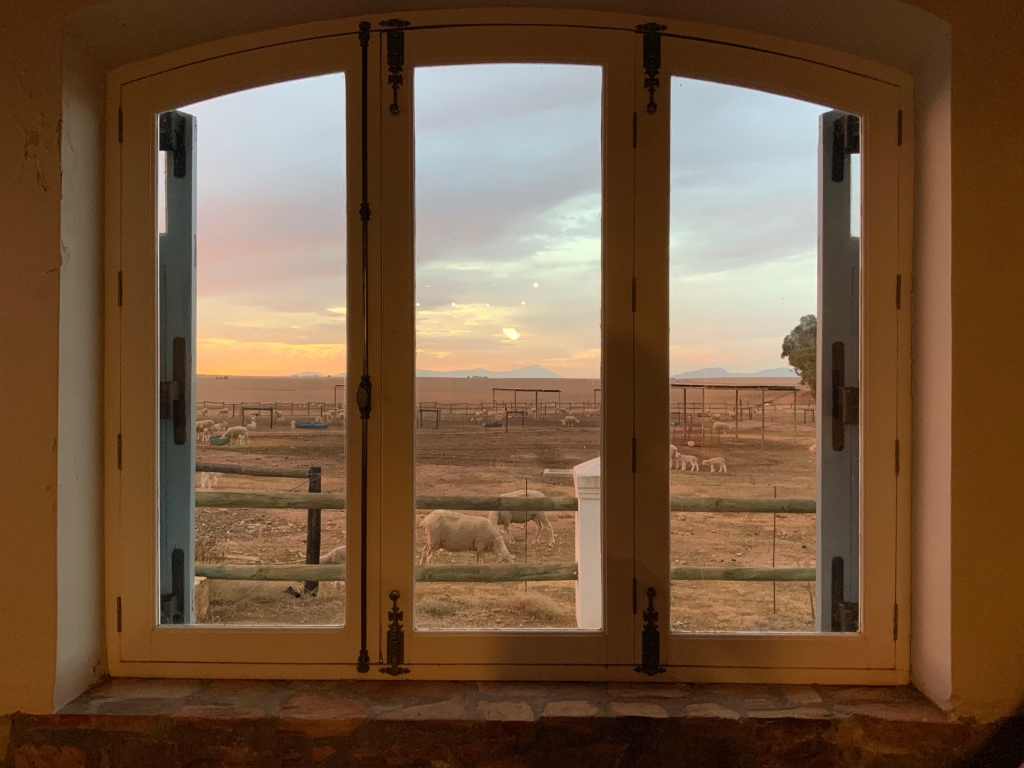

Above photos are the two areas in the cottage where I spend time. I created a small work area on the bedroom, where light streams in from above window, and also from a big barn-sized door to the right of that. During the day I open every door/window. I revisited paintings of Hopper, Gwen John, Pierre Bonnard, Henri Matisse, E Munch and a contemporary South African painter, Sasha Hartlief


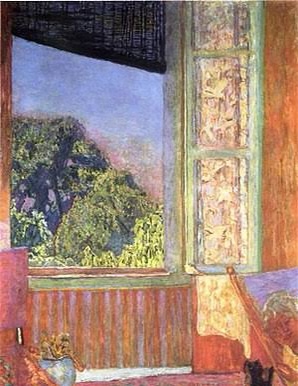
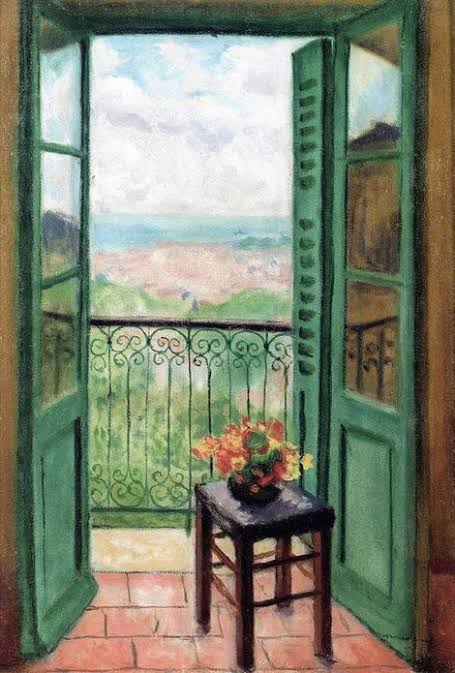

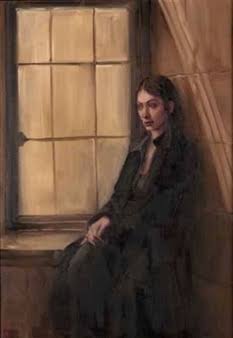
My first painting started off with one person viewing out, but reversing the reflection into a person looking back from the outside. I hoped I could place the viewer in the place of the model I painted inside – as if the viewer enter the image standing there and looking outside.

I started with a tonal painting of a figure staring out of the window, the daily news about the Covid 19 virus soon inspired me to add a figure staring back. I developed the idea about everyone outside, healthcare workers, grocery store workers, cleaners, security staff.. it became a group of people and to me it is a narrative about being protected by staying inside. The nakedness is the vulnerable side to it. I decided to do a bigger painting for the series and also put my model in the first third of the picture frame. I plan to get more vulnerability in this position, I see the first painting in a way as a confrontation. Every figure is unidentifiable. In a way the threat of the virus is teaching me something about identity and the issues of the haves and the have nots. I do feel almost privileged of the position I am finding myself in.
I will also use the bigger living room window view.

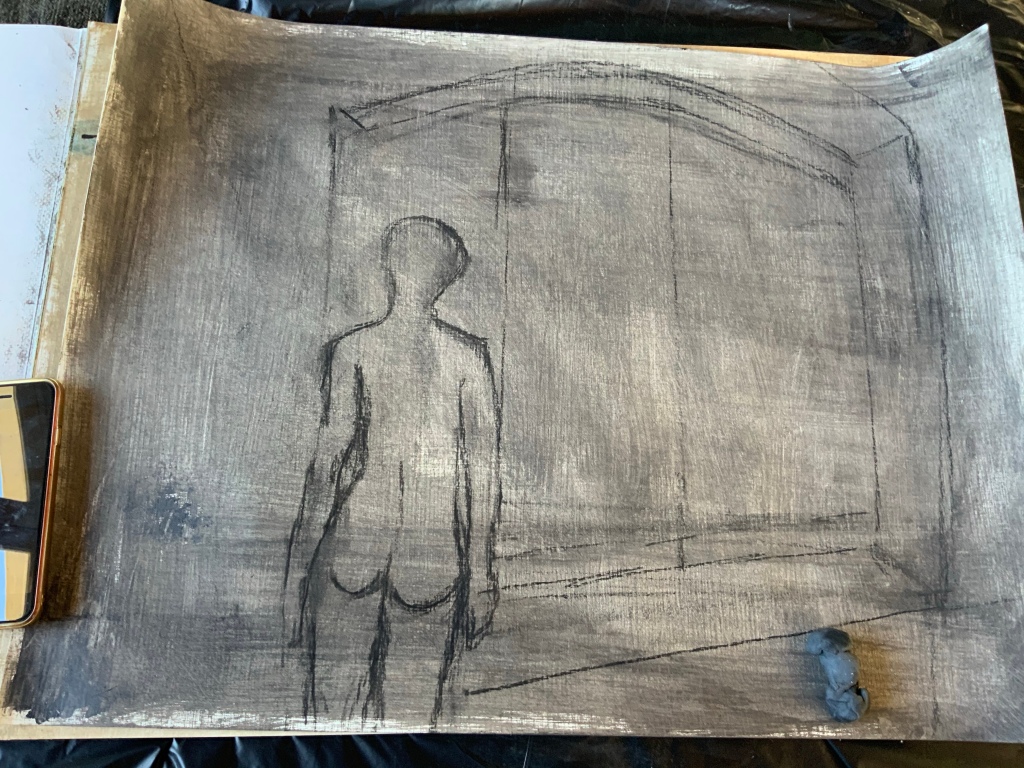
The most difficult part was the perspective of having the viewer look at the view the model should be seeing and how she is placed in front of the window. My husband took photos of me standing in front of the window in order for me to place a model where I wanted her. The model I used for the following paintings was a found photo I googled and have kept in my own found items/ideas file. I use a rub out technique when painting the model with burnt sienna to create form and tone.

Below is the final painting after I added some background, which placed the ‘carers’ into the picture frame and viewing into the window.

REWORKING After formal feedback from my tutor and a Zoom Critique session led by tutor Helen Rossouw.
I placed above Looking out 2, as well as the previous studies and the intended changes as below, to be critiqued. We broke into groups to discus and it was a place of trust and generosity amongst peers. I took away the following ideas: I am the first viewer in this series, it started with me looking out of the windows; the works reference photos as well as other ‘found’ images I saw connected to the idea of Looking out. I painted moments about a place I physically found myself at. The same ideas was carried into the rest of the series. Listening to all the other group participants I realized the importance of preparatory exploration and drawings. In my case I should have done more work on this and the accuracy of the main figure. My tutor’s mention of Munch and Courbet made me research these artist more. Below I insert two works by E Munch with which I can very much identify. I love printing and have done it in the past and would still pursue this as an art form in my work process.
By starting to adjust the legs, knees and hands I could already see that I can adjust the hips and hopefully also shorten the arms and do some work around the shoulders. I am happy for the guidance of my tutor to better record form by looking at proportions. It should be easy to work around the areas where I will adjust with paint. I should really look at what a final work says… in the critique we could only share what we saw and felt about a work, the context. When I decided to use the figure, I at first painted the figure onto the tones canvas paper and had the charcoal drawing of window in front, I thought it reminded me of a genderless shape. A gay friend commented on a angelic figure of a man, whos one butt cheek is lower, when I showed him a picture of work I started. I do think this idea stayed in my mind, which to me now seems part of my thoughts on liminality? In Looking Out 1, this is even more so, as there is only looking, no gender based ideas on difference or individuality. I showed the finished work to a younger friend, who is an intensive care worker and she felt very touched and emotional about what she saw in the picture. She shared only feelings about her experience by looking at it. I recently studied the work of Agnes Martin through Coursera and thoughts on her work practice and philosophy struck something I want to put here. By using a grid system as an organizing principle in her work, which was never mathematically correct, thus full of ambiguity, tension, differance, she allows the viewer to see what they want to see in her work.
I do like that my tutor referred to the the different use of paint in the work, like to the use of layering on the walls. I tried to use colour to add to drama of emotions, warm stone colours compared to grayish washed down walls next to it. By adding linseed oil and or solvent I made some colours/stone look more opaque, and other translucent. However there was no intentionality from my work process to have a naive modeling of the figures. I feel this is an area where I did not achieve what I set out to do. I Critiquing the work made me come to terms with my own learning from art history, developing drawing skills and how my own authentic voice will be found in the process. I need to build up skills and will use this opportunity to learn and grow.
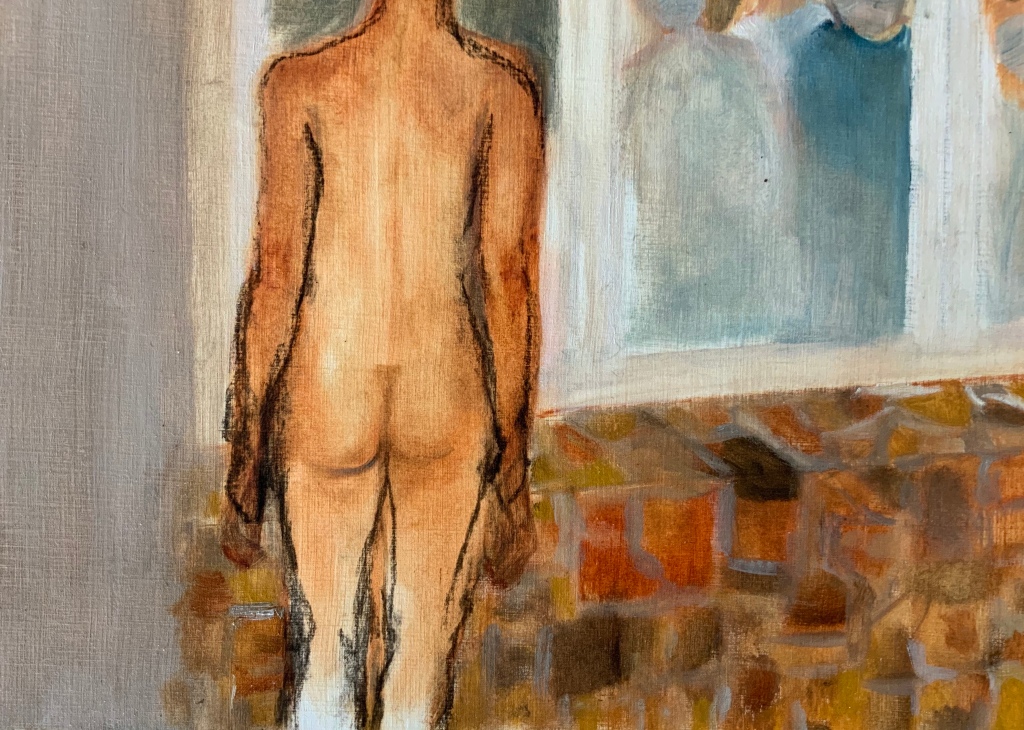


Munch was one of the founders of the Expressionist school, in which color, line and the delineation of recognizable objects are distorted at will for emotional effect; often, as in Munch’s case, centering on anxiety, fear, despair and spiritual angst. As in many expressionist works, the dark emotional tone is often belied by a palette of intense colors. Based on historical analysis, Munch used pigments including cadmium yellow, vermilion, ultramarine blue and viridian. The artist primarily applied concepts of colour theory to his work for theatrical effect, conveying the emotion of his subjects and eliciting an emotional reaction from the viewer in turn—aims that took precedent for Munch over accurately depicting the world around him, a radical approach in the conservative 19th-century art world. I do think I can learn from this in my art making process.

Below is a painting of Tienie (my husband, only life model I have access to) . The original painting onto which I worked was part of Part 3 of the course work. I had to do some adjustments but in hind sight realized that this could not work out as the body needed adjustments to be placed onto the couch. ( refer to tutors formative feedback in May 2020)

Quote from my blog: “….. scene reminds me of the Goya painting of the Maha in clothes: it is the staring back gaze I captured. I know my model was comfortable and almost dozing off into a short nap. I am also thinking about the reason for my representing this moment – I started it as an exercise to show a linear figure study, and draw with my brush as accurately as I can. I play around with the idea of not putting the figure into a realistic background, but work on tonal values.”

I decided to use a window view as the background. I could not successfully him on the beach and had to try to create some curved, bent position. I took a new photo, rotated the view, in order to use the old painting. ( see the images below) The painting is on medium textured canvas paper, size 60.5×45.5cm


After reading my tutor’s feedback, I wonder why I tried to re work above painting, as it never could become a representation. I always wanted to place the subject in a space, but it was floating in the original stage. I can only state my reason for doing it, as his presence means calm and companionship in this weird period of isolation. I will look into Surrealism more, as I realize the influence in my expressive ideas. It would have been better to paint a new picture as from the new photo images, or not even placing him on the couch, and develop more creative ideas around the sofa in front of the window. Here the paintings of Bonnard would have come to better use. I decided to put these thoughts into my blog after the formative feedback, as this is great learning and better critical thinking for me. I would agree that more planning and thought could have gone into the pre painting work. I learned that I most probably pushed to get a result which was unrealistic in the process. It made for a difficult process as well as creating a bit of a wobbly floating character. The idea of calm is not found anywhere in the figure, it is mostly a psychological image of being alone, and at best, some inward thinking.

I hoped to get an oval form to paint on. I tried above drawing and the idea of using negative space. Whilst developing ideas negative shapes came to mind and I considered using it, but these ideas became more abstract and I did not feel comfortable to go into this direction. I have however, after doing the view on the pier, decided to do some landscapes where I can incorporate these ideas of negative and positive shapes. I will develop this in my ongoing blog about my own development. I was influenced by listening to an online talk by an abstract artist on landscape, ecology and place.
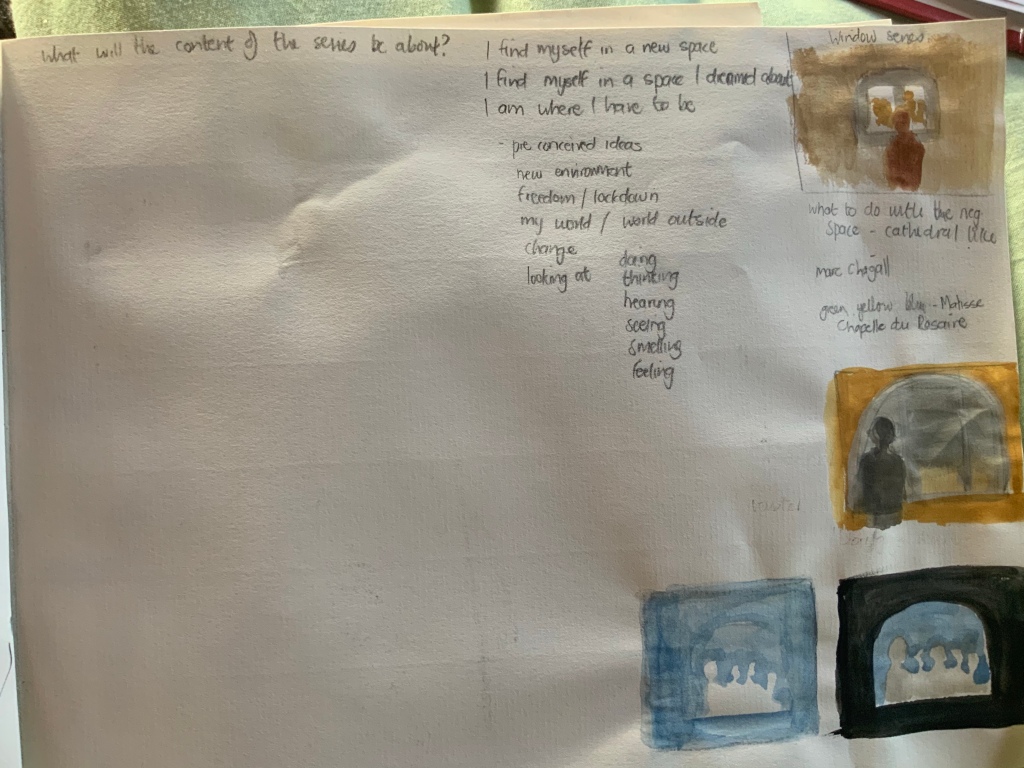

I decided to cut one of my smaller paintings into an oval shape after the painting was done and would like to create a composition on an oval shaped board, which I know I might be able to find after May 1st, as our lockdown currently does not allow for online shopping deliveries in our outline areas.

The drawings in my sketchbook was part of my thinking and planning process. Reflections in the evening of the interior onto the window was also looked at. I looked at colours that would compliment the surroundings, the style of the window frames made me search for cathedral type ideas, and Marc Chaggal came to mind. This is the view from a bigger window out of the living area. Here we watch beautiful sunsets as well as the view of the sheep and lambs being born for the past few weeks. I would prefer do do it on an oval shaped support and decide to change the view in order to fill the oval picture frame.
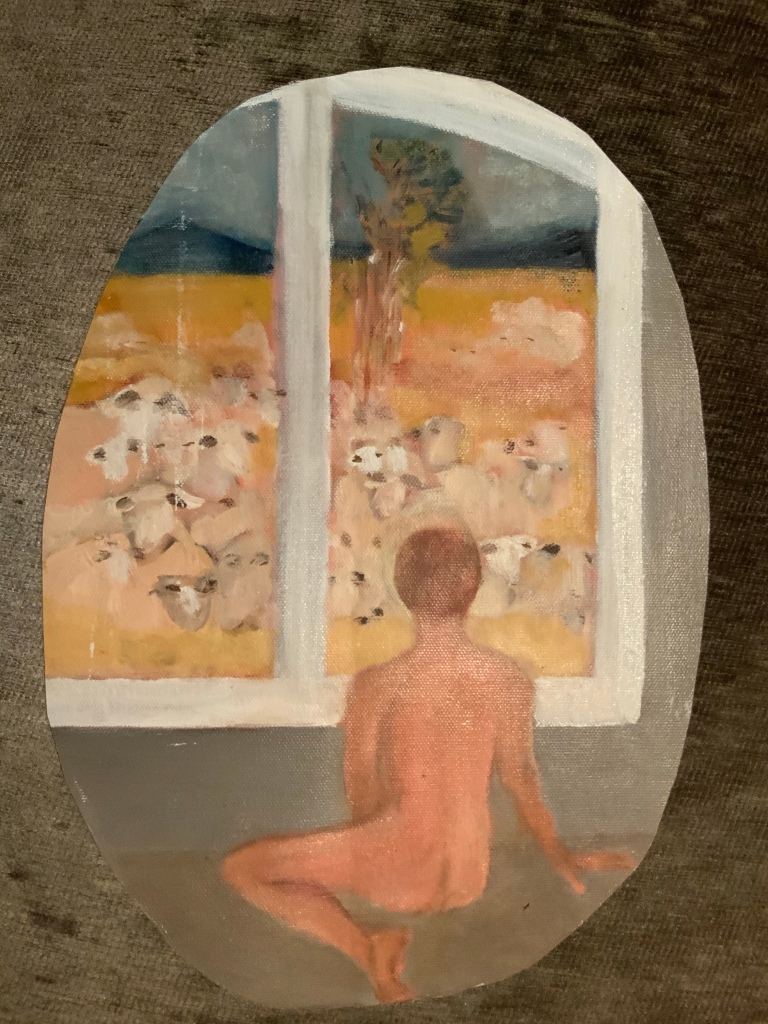
Final painting in the series: here I wanted to paint a view from the outside, a landscape of this area where I currently find myself. There is a dam which is now dry. I sat on the wooden jetty/pier making some drawings for the next painting.
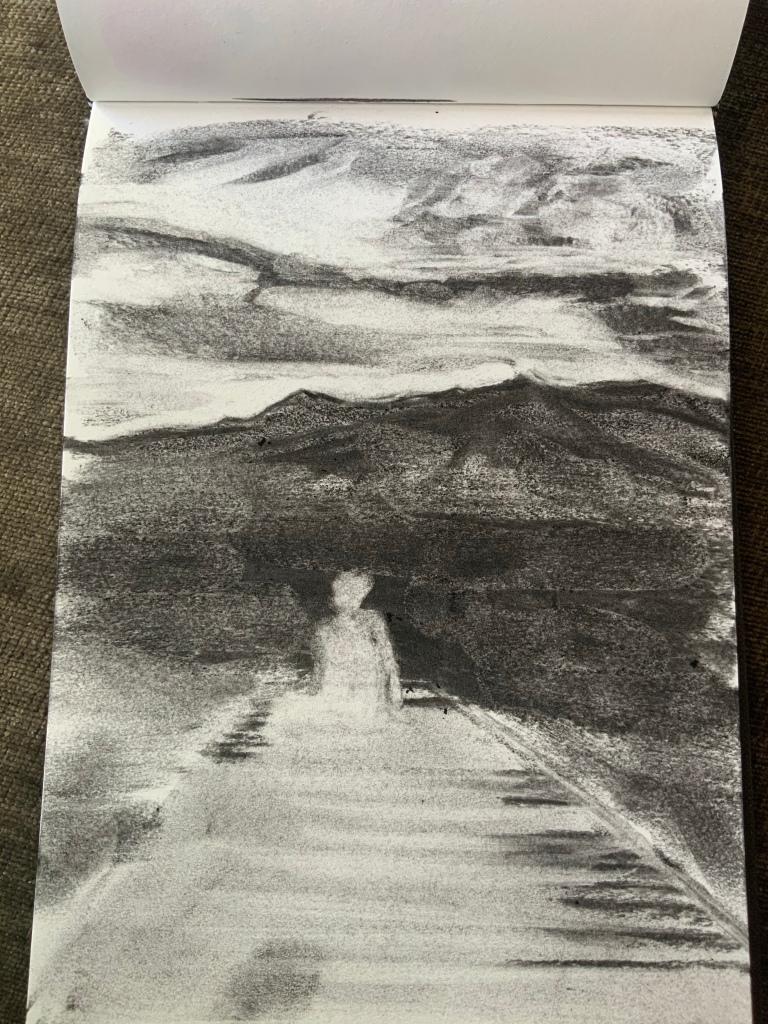
I decide not to include the trees in the foreground and focus on the typical Swartland landscape, that of grainfields and small rolling hills. My main idea is to create a mood of looking outward and the model sitting on the getty creates a place of loneliness and space within the surrounding landscape. It is late afternoon and the sun is setting to the left of the picture frame.



Composition wise I would have preferred a bigger painting, as well as shown more of the lovely sky. I worked on pre-toned canvas paper, size 30.48×40.64cm. The mountains are normally best to paint in the late afternoon on a clear day, as all the shapes, lines and forms are almost etched. The range at the back became my first lines to ensure I create depth and distance from the subject in the front of the picture plane. The learning about aerial perspective have to be incorporated. Leonardo da Vince discovered that as a landscape recedes from the viewer its colours and tones alter due to the nature of the atmosphere. I use cooler blue tones in the furthest mountains and warmer brown in the closer range. I also try to get a paler tone in the background, and decide to take a photo of my painting in Noir colour setting. This gives me the opportunity to even go back and remove more detail in the background and consider warmer colours in the foreground. I used the opportunity to look at the mountains in the mornings, as the difference between sharp and hazy, warm and cool was easier to see.
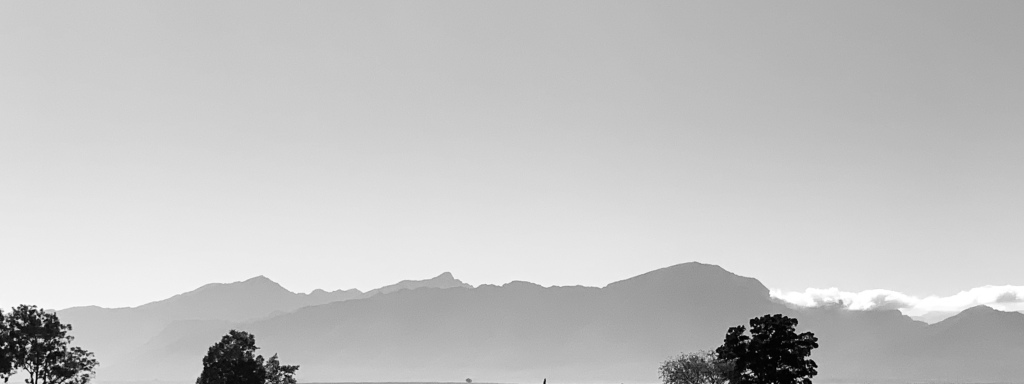
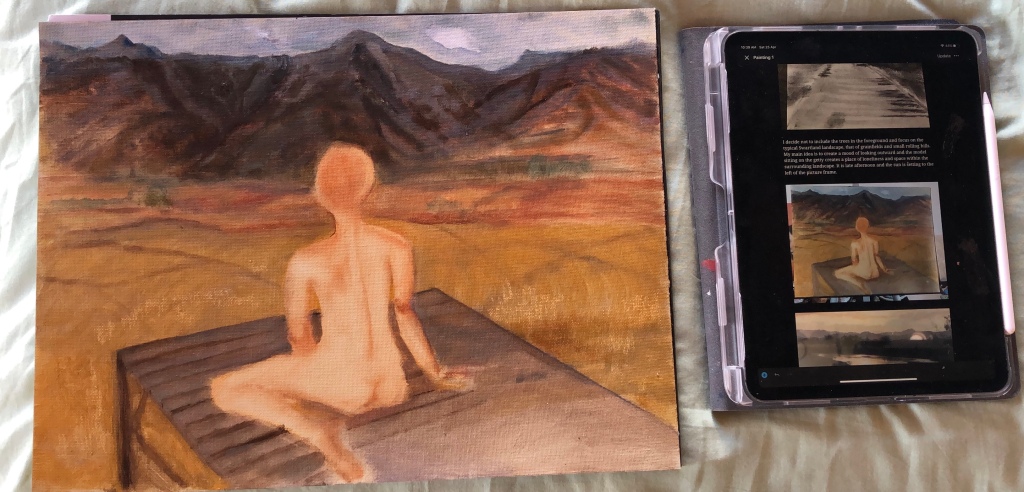

MY EVALUATION OF THE SERIES
The series is a set of 5 paintings about looking. The first study was an exercise about my own looking as well as my skills, which has grown during the course. The paintings follow each other as it is expressive by dealing with feelings of being lonely and also being safe at the same time, the cooler and warmer colours add to these emotions. The Dreamer was the least successful painting. I feel the subject is placed at an angle in front of the window to allow the viewer the intimacy of the moment and experience a place for being alone, despite all that is going on around one. Using an ‘Old painting of the figure’ was perhaps not a good choice as I could not create good form of a lying body. Looking out 3, the last painting of the series is mostly a landscape for contemplation. Looking at the composition I think if I had not centered the model so much, I could have created a better painting. I feel I have given myself space to develop ideas and in the process also did some learning about the process of painting. I need to focus on developing ideas and working in a series is a great way of staying thoughtful about what I set out to do.
